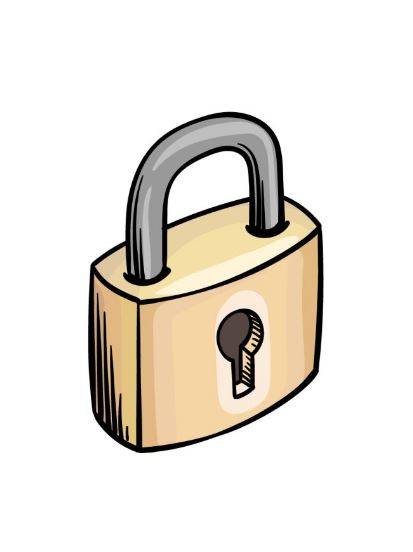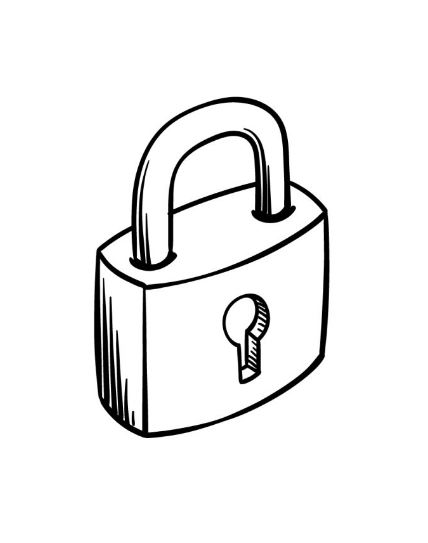Featured
How to Decide Pet Custody in a Divorce?

There is a lot of advice available on child custody, but rarely do any resources focus on pet custody after divorce. However, most people cherish their pets as their children, and pet custody is an important issue that needs to be resolved when considering a divorce. You should seek the help of Madison divorce lawyers if you have any questions about pet custody in a divorce.
Pets are considered property
Even though most people consider their pets as their family, in the legal world, pets are considered “personal property.” This means that when determining pet custody, the case does not follow the rules of child custody but rather that of property division in divorce. However, the laws are changing in many states of the USA, and a lot of states have started to consider the “best interest of the pet” and are even allowing joint custody of the pet.
How are the rules of property division applied to pets?
To divide marital property after a divorce, most of the states in the USA use the rule of “equitable distribution.” This means that based on the facts and circumstances of the case, the judge will distribute the property based on what they think is fair. Some states also follow the “community property” rule, where the property is divided in half so both spouses get assets of equal value.
However, in all states of the USA, the separate property of each spouse is not divided. This means that if one spouse had the pet before the marriage, or if they brought the pet into the household, then they will be awarded custody of the pet.
How is pet custody decided?
Some factors that are considered when determining custody of the pets are:
- Who bought the pet?
- Whose name is on the ownership documents?
- Which spouse had the primary responsibility of looking after the pet and taking care of it?
- Who paid for most of the costs involved in taking care of the pet?
- Which spouse’s work schedule allows them to have enough time to care for the pet properly?
- Does either of the spouse have a history of animal abuse?
Are you and your partner divorcing with pets?
If you and your spouse are considering a divorce, you may have a lot of questions about who gets custody of the family pet after your divorce. Reach out to an experienced divorce attorney and get professional help in figuring out the laws surrounding your case.

Featured
How to Draw a Padlock

How to Draw a Padlock. Sometimes your property is in situations where it is at risk of being stolen or injured. This is unfortunate, but fortunately, We can take some steps to ensure this property is kept beautiful and safe.
Also, check our Bee Coloring Pages!
A lock is a simple device, but it’s very effective for keeping personal belongings safe and out of reach. They can come in many different shapes and sizes, and despite the simplicity of their design, learning how to draw a Padlock can be difficult. However, this tutorial is here because it will show you how to draw one of these handy devices quickly!
How to Draw A Padlock
Step 1
To get started with this guide to drawing a Padlock, let’s start by drawing the central part of the Padlock. As you draw this central part of the Padlock, try to keep the dimensions of this rectangular object if you were holding it in your hands.
Use two vertical lines close together for the thin side of the lock, and then use a slightly curved horizontal line for the base. Finish by drawing another slightly curved vertical line for the other side of the lock. The top will be empty, but we will fill it shortly!
Step 2
In this second part of your lock design, you’ll fill in the gaps left in the previous step. In this step, you will draw the top edge of the lock and again use slightly curved lines to connect all the previous edges of the lock.
As you draw, leave two relatively small gaps at the top. The reference image will show you how to place them, and these will later be where the metal bar of the lock will go. With this piece of block drawn, you are now ready for step 3.
Step 3
Without a keyhole, a padlock would be pretty useless as it would lock the owner and potential intruders out of his property! For this reason, it is best to add a keyhole in this step of our how-to draw a lock guide.
Lock hole placement may vary depending on the brand of lock, but it is on the front. The keyhole has a round top and then a rectangular section below. Add some more lines to add depth to this keyhole, and then we can move on.
Step 4
Another essential feature of the lock is the metal bar that extends from it. We draw this look for this part of your padlock design. In this step, you will also fill in the gaps left at the top of the lock in a previous step.
The smoother you get when drawing this bar, the better. There’s also a reasonably specific shape, so try to take it slow and replicate the lines as they appear in our reference image. Once the bar is drawn, you can move on to some final details in the next step!
Step 5
You are now ready to add the finishing touches in this fifth step of our how-to draw a Padlock guide! The entire profile of the Padlock is complete at this point, so we’ll now add more details for more realism.

To do this, we’ll add some thick and pretty straight lines on different sides of the lock to create some shading detail. You can even add more of that shading detail if you prefer! Before proceeding to the last step of the tutorial, you might want to draw some extra details as well.
What do you think this lock would protect? Could you show us some of your ideas by drawing a background for this picture? It would be exciting to see what you would use this lock for!
Step 6
This is the last step in drawing your Padlock; you can finish by adding colors to the picture. In our reference image, we used gold and yellow tones for the main body of the lock. This helps give this section the appearance of being made of polished bronze.

We used shades of gray for the bar to make it look more metallic. We chose these colors, but you could use many other colors! If you’re going for a metallic look, you can also stick a light sprinkling of gold or silver glitter on top to make the metal look shiny.
Your Padlock Drawing is Finished!
Also read: My Cat And I Love It: Outsunny Black Cat
Business
Dead And Co Setlist What They Played At The Gorge Amphitheatre

Dead And Co Setlist What They Played At The Gorge Amphitheatre
Last weekend, Dead And Co Setlist descended upon the Gorge Amphitheatre in George, WA for their annual three-night run. As always, the boys delivered an amazing show, playing a mix of old favourites and new classics. If you weren’t able to make it out to the Gorge this year (or even if you did), here’s a look at the setlist from all three nights.
Dead & Company’s Setlist from their show at the Gorge Amphitheatre
Dead & Company’s Setlist from their show at the Gorge Amphitheatre:
1. “Bertha”
2. “Me and My Uncle”
3. “Ramble On Rose”
4. “When I Paint My Masterpiece”
5. “Althea”
6. “Cassidy”
7. “Don’t Ease Me In”
8. “Cold Rain and Snow”
9. “The Music Never Stopped”
10. “Deal”
11. “‘Til the Morning Comes”
Set 2:
12. “Help on the Way” >
13. “Slipknot!” >
14. “Franklin’s Tower”
15. Playin’ in the Band >
16. Uncle John’s Band >
17. Playin’ Reprise
18. Dark Star >
19 Drumz/Space > 20 Dark Star Reprise 21 Stella Blue 22 One More Saturday Night Encore: 23 Ripple
Highlights of the show
The show started with “Bertha” and included several other Grateful Dead classics like “Sugaree,” “Jack Straw,” “Deal,” and “Tennessee Jed.” The set also featured a couple of covers, including The Beatles’ “Dear Prudence” and Bob Dylan’s “All Along the Watchtower.”
The second set was even better, starting with an incredible “Fire on the Mountain” and a heart-stopping “Scarlet Begonias.” Other highlights from the second set include “Playin’ in the Band,” the classic jam vehicle, as well as a personal favorite, “Drums” > “Space.” The show ended with a beautiful performance of Jerry Garcia’s solo work, “Stella Blue.”
Final thoughts
This show was a celebration of life itself. After such a trying year, it is important to reflect on what we have accomplished and how lucky we are. I hope that everyone takes some time to think about this idea this month as we begin 2021.
What fans are saying about the show
The Grateful Dead have been one of the most influential bands in music history, and their fans are some of the most dedicated in the world. So when Dead & Company, a new band featuring original members Bob Weir and Mickey Hart, announced their first tour, fans were eager to see what they would do.
The band’s debut show at the Gorge Amphitheatre was a resounding success, with fans raving about the setlist. Highlights included renditions of classic Dead songs like “Bertha,” “Sugaree,” and “Althea,” as well as newer tunes like “Fire on the Mountain” and “Iko Iko.” The band also paid tribute to late Grateful Dead leader Jerry Garcia with a moving performance of “Black Muddy River.”
It’s clear that Dead & Company are already making waves with fans old and new. If their debut show is any indication, this is a band that is here to stay.
Setlist video
The setlist for Dead and Company’s show at the Gorge Amphitheatre was:
“Iko Iko”
“Bertha”
“New Speedway Boogie”
“Wharf Rat”
“He’s Gone”
“Fire on the Mountain”
“Drums/Space”
“The Other One”
“Stella Blue”
“Sugaree
Encore:
Touch of Grey
Upcoming Dead & Company tour dates
The wait is finally over! After a long hiatus, Dead & Company are back on tour and will be making their way to the Gorge Amphitheatre this summer. The tour kicks off on June 10th in Boulder, Colorado and will make its way across the country before concluding on July 6th in Boston, Massachusetts. Below is a list of all the upcoming tour dates:
Date June 10 – Boulder, CO @ Folsom Field
On June 13 – Albuquerque, NM @ Isleta Amphitheatre
June 15 – Phoenix, AZ @ Ak-Chin Pavilion
Check June 17 – Los Angeles, CA @ Hollywood Bowl
View June 20 – Mountain View, CA @ Shoreline Amphitheatre
June 22 – San Diego, CA @ Mattress Firm Amphitheatre
July 5 – Saratoga Springs, NY @ Saratoga Performing Arts Center
July 6 – Boston, MA @ Fenway Park
Featured
A Clear Difference Between Wall-To-Wall Carpets And Carpet Tiles

A comfortable environment enhances the beauty of a place, and hence carpets are a basic need nowadays. Carpets help in blocking invasive sounds, keep the atmosphere calm and warm, and add a soft feel under your feet. The market contains carpets in various colors, prints, and designs. Here come the unique designs of carpets that create confusion at installation time.
Two kinds of carpet styles are getting hyped nowadays, and people are getting crazy about them, and it has become difficult for them to choose one type for their place. These trendy designs are wall-to-wall carpets and carpet tiles. Both have a different series of importance if we see deeply; here, we have discussed the apparent difference between them to make you sure about the type you need.
Wall-To-Wall Carpets VS Carpet Tiles
- Wall-to-wall carpets are huge carpets that, when installed in a place, make a border around walls for a firm and classy look; because of this installation style, they are called wall-to-wall carpets.
- Carpet tiles are tile-shaped small carpets that do not require to be installed around walls. They are small with different vibrant colors and prints.
Some points have been discussed for a calm approach to your interior.
Installation
- Wall-to-wall installation of a vast carpet is hectic; you need a professional team. Installing a vast size carpet at a place requires protocol; they come in rolls, and handling a roll and fixing the carpet with the wall in a welcoming manner is difficult. Cutting and shaping the rug according to the room is a total waste of carpet roll and time. Moreover, the print can be destroyed if you don’t measure the place before buying the carpet roll.
- Carpet tiles installation is more straightforward than wall-to-wall carpets because they come in small sizes, are easy to handle, and are also designed with one sticky end where release paper is attached. Release the release paper and let it be stuck to the ground. You can also walk on them to confirm the firm grip of carpet tiles.
Uniform Appearance
- Wall-to-wall carpets are already printed by keeping in mind the floor appearance of the huge-sized place. Their color and prints look uniform in a home because the entire carpet is dyed simultaneously, and the prints have been installed on the carpet by looking at the whole carpet’s appearance. For luxurious patterns of carpets, buy wall-to-wall carpet tiles in Dubai.
- Carpet tiles are made separately, and because of their sharp shape, if they are installed in a place, they give a non-uniform appearance that looks awkward and unwelcoming, especially in a formal workplace. A wall-to-wall carpet looks more uniform and decent.
Prints and Colors
- The prints of wall-to-wall carpets look welcoming. They come in different unique prints. Their trendy prints are geometrical shapes, lines, and blocks. The range of their colors is a long list to match your decor theme.
- Carpet tiles come in solid, vibrant colors to combine with your wall theme. Their prints are not so famous because it is impossible to take care of a print while installing them.
Cost-effective Carpet Style
- The vast big wall-to-wall soft carpets are expensive because of their size and the fiber count they contain, and the natural carpets are comparatively less costly. They look more elegant in a place, but nowadays, people are moving towards naive ideas, so their enormous size makes them outdated.
- The carpet tiles are cost-effective and easy to install, so the installation expenses are also excluded. Finding ease in everything is the need of the day. The easy installation and maintenance of carpet tiles is the reason for their market demands.
Creative Ideas For Design
- Install a wall-to-wall carpet with the same colors and prints as it came. The image or color of the carpet decides the theme of your entire room. There will be no creative idea implementation.
- Carpet tiles come in different colors; measure the place, think about a fantastic idea, and install them the way you want. You can create an appealing dichromatic look, a multi-color dramatic look, or a monochromatic look for a maximum uniform appearance.
Cleaning & Maintenance
- The daily cleaning routine of a carpet depends on the fibers it is made of and the qualities it attains. But what about if a carpet got stained? It is a tough job to get rid of a stain on a vast carpet. Wash it off, and the clean area may get the mark too. You must take a professional maintenance service if the stain is stubborn and catchy. If still, it would not go away, throwing the whole carpet just because of a single stain is heartbreaking, and letting the stain stay where it is can add an unwelcoming look to your place.
- You can detach a single stained tile and wash it off to get rid of it; if the stain is stubborn, the single tile can be replaced at reasonable rates.
A Wind-up
Carpets are enormous but give a uniform appealing appearance to a place. While carpet tiles are small, their separation is prominent. Carpet tiles are easy to install and maintain, while many carpet installations and maintenance need professional services. Huge carpets are more expensive than carpet tiles. You can install a creative idea of your own with carpet tiles.

 Travel2 years ago
Travel2 years agoPractical And Essential Car Interior Accessories To Add Comfort And Convenience To Your Drive

 Business2 years ago
Business2 years agoTop Reasons Why you Need to Consider Outsourcing Real Estate Photo Editing

 Business2 years ago
Business2 years agoDead And Co Setlist What They Played At The Gorge Amphitheatre

 Featured2 years ago
Featured2 years agoHow to Make a Sports Career in India

 Health2 years ago
Health2 years agoGarlic Is The Best Vegetable To Treat Heart Problems

 Sports2 years ago
Sports2 years agoHow to watch the ETSU game -What are the benefits of watching the ETSU game?

 Health2 years ago
Health2 years ago5 Reasons to Choose Turkey for Dental Treatments

 Travel2 years ago
Travel2 years agoSpectacular Hot Air Balloon Rides in Goa